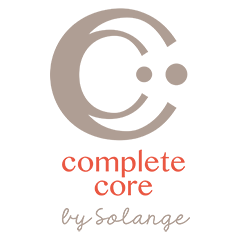The pelvic floor is a mysterious and unfamiliar part of the body for many women. There is some emphasis from providers on the importance of Kegels for a strong pelvic floor, yet a lot of misinformation and controversy around this topic. One in three women will have pelvic floor dysfunction including bowel and bladder issues and pelvic pain according to the American Urogynecologic Society. The National Association For Continence has reported that 40% of women are not performing a Kegel exercise correctly.
Read moreIt is challenging to treat a coccyx injury. Depending on the extent of the injury (bruise, sprain, strain, fracture) it can take 6 months to a year to heal with ongoing injury prevention and impact on the pelvic floor. It is an injury that it is very difficult to rest and takes mindfulness in body mechanics and posture throughout the healing process. The coccyx sits at the base of the spine and is extremely important because of its attachments to the pelvic floor. It is not meant to bear weight. However, when we sit backwards or slump, shift weight to one side (crossing legs), stand or bend in poor posture, this all affects the coccyx.
Read moreSolange Ross Featured On Romper
Join physical therapist Solange Ross of Complete Core for 5 core exercises that will promote better posture during pregnancy and they are functional! Click here to watch now!
Read moreSolange Ross Featured on FitBump
Posture is key during pregnancy. Workouts that may have been routine before, may need a little reassessment based on how your body is changing. We chatted with physical therapist and core specialist Solange Ross, founder of NYC-based Complete Core on the best way to engage our pelvic core to prep for our workouts.
Read moreBy Elizabeth D’Annunzio Shah, PT, DPT, OCS of Thrive Integrated Physical Therapy
As a physical therapist, I have had a number of patients coming in with questions about their diastasis recti. As you may remember from my previous post, I recently had a baby and since then, the question of how to treat a diastasis recti has been on my mind. This seems to be an issue shrouded in concern and fear for many women, so let’s talk about it.
WHAT IS A DIASTASIS RECTI? Read more...
Read moreSo what's the deal with this kegel exercise anyway? What exactly am I doing down there? If you have ever wondered this, you are not alone. Many health care providers talk about the importance of doing kegels during pregnancy and post-partum to tone the vagina. You can read about them all over the Internet. But does anyone really explain to you how to do them?
Read moreI knew I was going to go to physical therapy post-partum before I even had my baby. Why you ask? Because it was my third baby and I've had my kids relatively close in age. I’m also a women’s healthy physical therapist. Perineal re-education and strengthening is a must post-partum especially if you've had more than one baby.
Read moreIt is common to feel disconnected from your post-partum body. The rib cage, hips, and pelvis have stretched out to accommodate the pregnancy and birth of the baby. Your internal organs which have shifted around during the pregnancy are still settling back into place. The pregnancy belly has turned to a soft baby bump. At the 6 week post-partum checkup, women are given the green light to exercise, but not the guidance on how to begin again.
Read moreDiastasis Recti or Abdominal separation occurs during pregnancy as the muscles and ligaments stretch, the uterus moves upwards in the abdomen, and hormones increase, making everything more lax. It can be further exacerbated by lifting, incorrect breathing and injury during birth. I see varying degrees of separation post-partum from within normal to borderline to serious.
Read moreIt's very common during pregnancy to experience lower back pain or shooting pain in the butt. As the joints and ligaments stretch in the pelvis to accommodate the growing baby, there is increased stress on the musculature and internal pelvic structures. If muscles become too tight they can cause stress on these structures.
Read moreI get asked this question frequently by women at varying points in their post-partum recovery. They see their body returning to its pre-pregnancy shape, but a little belly remains.
Read more









